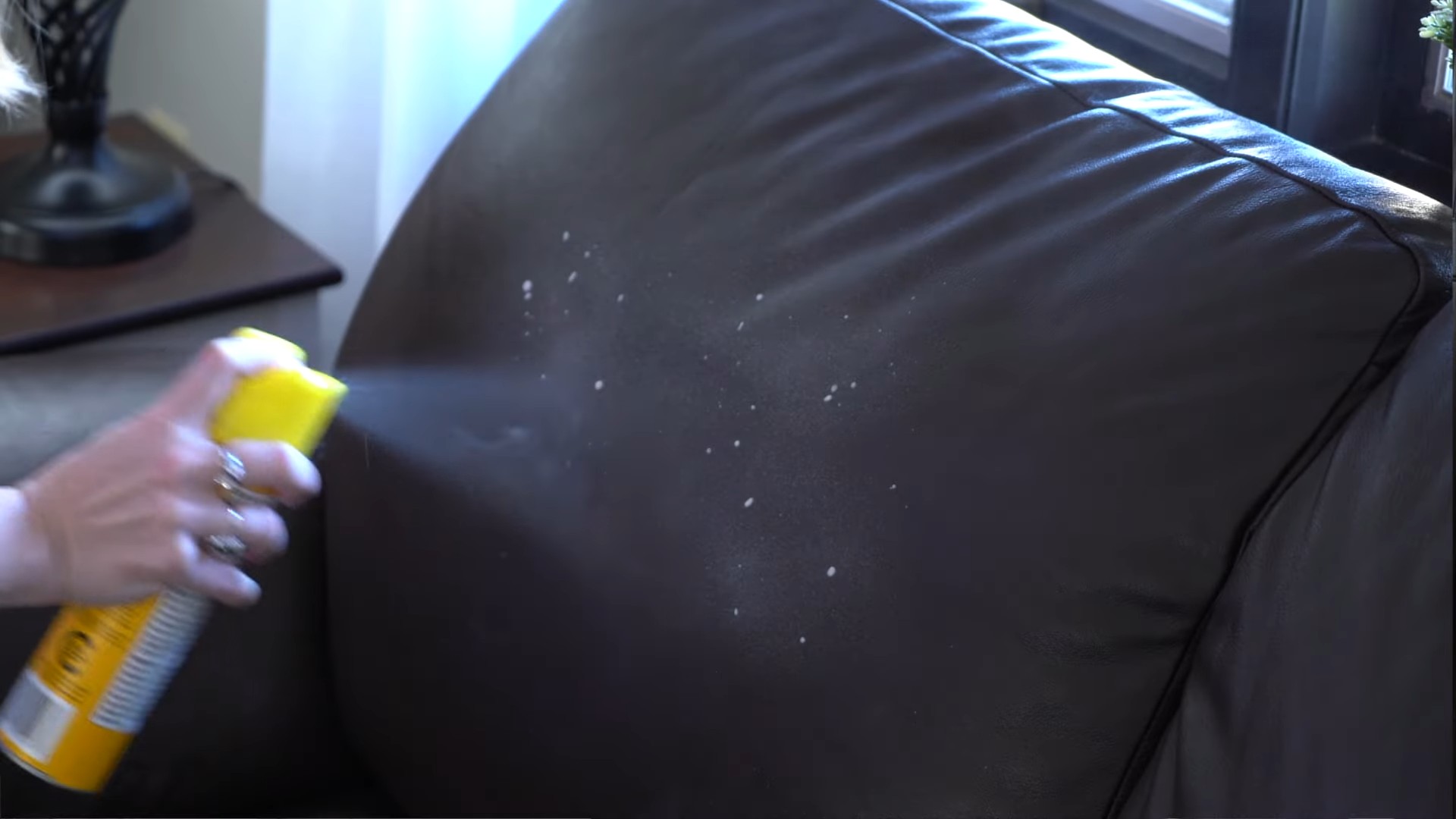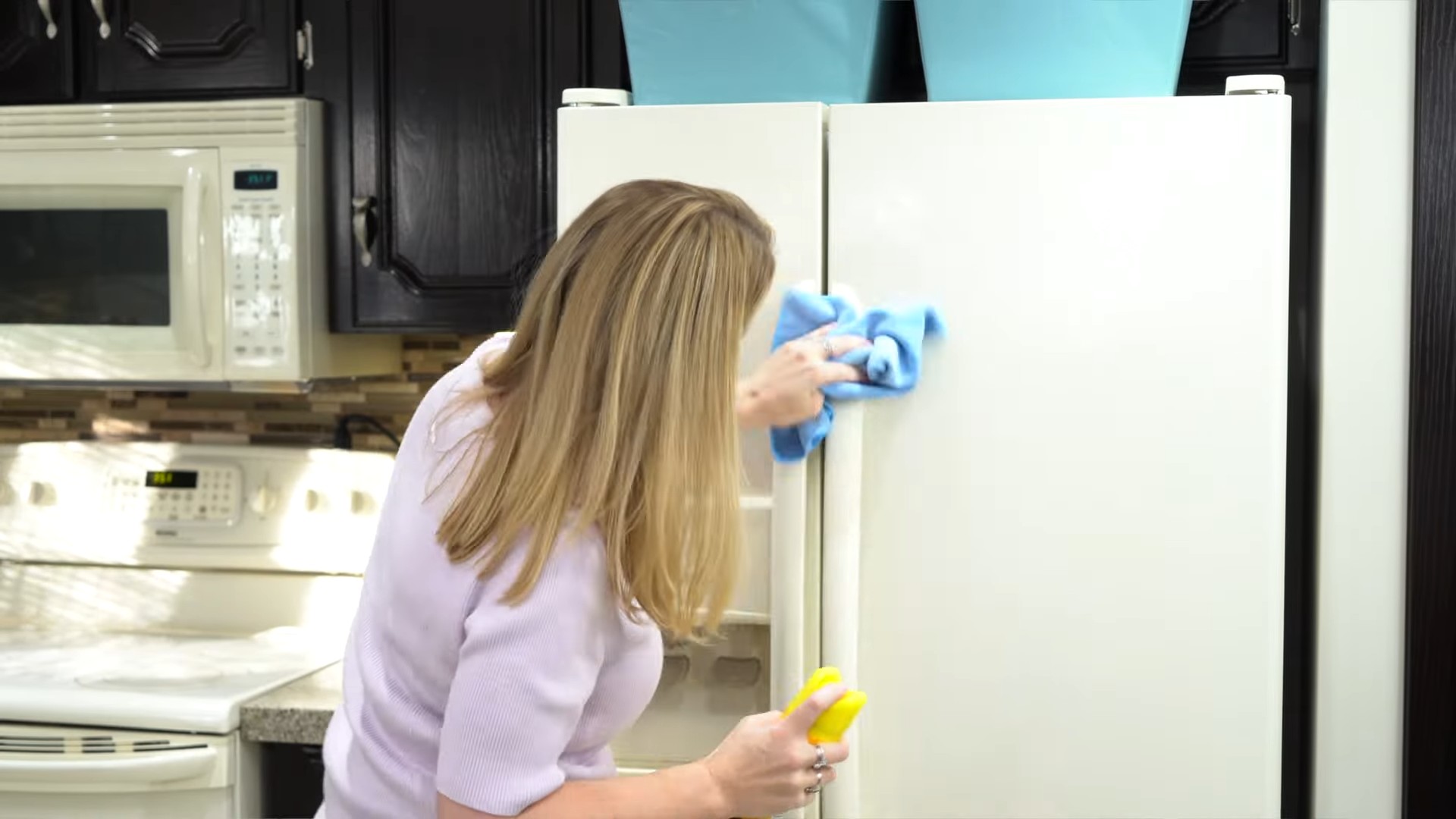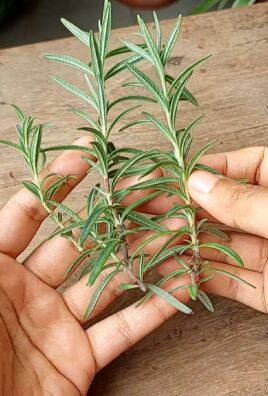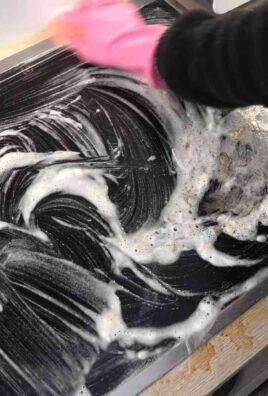DIY Polish Tricks: Ever feel like your home could use a little sparkle, a touch of ‘wow,’ without breaking the bank? I know I have! For generations, Polish households have been masters of resourcefulness, transforming everyday items into tools for cleaning, decorating, and maintaining a beautiful home. These aren’t just random hacks; they’re time-tested traditions passed down through families, reflecting a deep connection to nature and a commitment to making the most of what you have.
From using vinegar to achieve a streak-free shine on windows to employing potato peels to revitalize your silverware, the ingenuity of Polish DIY methods is truly remarkable. In a world increasingly focused on sustainability and cost-effectiveness, these DIY Polish Tricks are more relevant than ever. They offer a practical and eco-friendly way to keep your home looking its best, using ingredients you likely already have in your pantry.
Ready to unlock the secrets of Polish home maintenance? I’m excited to share some of my favorite DIY tricks that will not only save you money but also connect you to a rich cultural heritage. Let’s dive in and discover how to bring a little Polish magic into your home!

DIY Upcycled Denim Planters: A Step-by-Step Guide
Hey there, fellow DIY enthusiasts! Today, I’m super excited to share a fun and eco-friendly project: turning old jeans into adorable denim planters. Not only is this a great way to give your old denim a new life, but it also adds a unique, rustic touch to your home or garden. Plus, it’s surprisingly easy! So, gather your supplies, and let’s get started!
What You’ll Need
Before we dive in, let’s make sure you have everything you need. This will save you time and frustration later on.
* Old Jeans: The sturdier the denim, the better. Look for jeans that are still in decent shape, even if they have rips or stains. We’ll be cutting them up anyway!
* Scissors or Rotary Cutter: Sharp scissors are essential for clean cuts. A rotary cutter and cutting mat can be even more efficient, especially if you’re making multiple planters.
* Sewing Machine (Optional): While you can hand-sew this project, a sewing machine will make it much faster and more durable. If you don’t have one, don’t worry! I’ll show you how to hand-sew it too.
* Thread: Choose a thread color that complements your denim. I usually go for a classic blue or a contrasting color for a pop.
* Pins: These are crucial for holding the fabric in place while you sew.
* Measuring Tape or Ruler: Accuracy is key for creating a well-shaped planter.
* Pencil or Fabric Marker: For marking your cutting lines.
* Potting Soil: Obviously, you’ll need something to plant your greenery in!
* Plants: Choose plants that are suitable for the size of your planter and the amount of sunlight they’ll receive. Succulents, herbs, and small flowers work great.
* Plastic Liner (Optional): This will protect the denim from moisture and prevent soil from leaking out. You can use a plastic bag, a cut-up plastic container, or a store-bought planter liner.
* Gravel or Pebbles (Optional): For drainage at the bottom of the planter.
* Embellishments (Optional): Buttons, patches, lace, ribbon – get creative and personalize your planter!
Preparing the Denim
Okay, let’s get our hands dirty (well, not yet, but soon!). The first step is to prepare the denim.
1. Choose Your Jeans: Select a pair of jeans that you’re ready to repurpose. Consider the size of the planter you want to create when choosing your jeans. Larger jeans will obviously yield larger planters.
2. Cut the Legs: Using your scissors or rotary cutter, cut off both legs of the jeans. You’ll be using these to create the body of the planter. I usually cut them off just below the pockets.
3. Turn Inside Out: Turn one of the jean legs inside out. This will hide the raw edges of the denim and give your planter a cleaner look.
4. Flatten and Pin: Flatten the jean leg and pin the bottom edge closed. Make sure the seam is aligned and the fabric is smooth. This will form the bottom of your planter.
Sewing the Base
Now comes the sewing part! This is where we’ll create the base of the planter.
1. Sew the Bottom Seam: Using your sewing machine or hand-sewing needle, sew a straight line across the bottom edge of the jean leg, securing it closed. If you’re using a sewing machine, a straight stitch with a medium stitch length works well. If you’re hand-sewing, use a backstitch for extra strength.
2. Reinforce the Seam: For added durability, sew a second line of stitching right next to the first one. This will prevent the seam from unraveling, especially when the planter is filled with soil.
3. Trim Excess Fabric: Trim away any excess fabric along the bottom seam, leaving about 1/2 inch of seam allowance. This will reduce bulk and make the planter look neater.
4. Turn Right Side Out: Carefully turn the jean leg right side out. You should now have a denim pouch with a closed bottom.
Creating the Shape
This is where we’ll give the planter its final shape.
1. Fold Down the Top Edge: Fold down the top edge of the jean leg about 1-2 inches, creating a cuff. This will add a decorative touch and give the planter a more finished look.
2. Pin the Cuff: Pin the cuff in place, making sure it’s evenly folded all the way around.
3. Sew the Cuff (Optional): If you want to secure the cuff in place, you can sew it down using a straight stitch or a decorative stitch. This is optional, but it will prevent the cuff from unfolding. I like to use a contrasting thread color for this step to add a little visual interest.
Adding the Liner (Optional)
A liner is a great way to protect your denim planter from moisture and prevent soil from leaking out.
1. Choose Your Liner: Select a plastic liner that fits inside your denim planter. You can use a plastic bag, a cut-up plastic container, or a store-bought planter liner.
2. Trim the Liner: If necessary, trim the liner to fit snugly inside the planter. Make sure it doesn’t stick out above the cuff.
3. Place the Liner Inside: Carefully place the liner inside the denim planter, making sure it’s centered and evenly distributed.
Planting Your Greenery
Now for the fun part – planting!
1. Add Drainage (Optional): If you’re using a liner without drainage holes, add a layer of gravel or pebbles to the bottom of the planter. This will help prevent the roots from sitting in water and rotting.
2. Fill with Potting Soil: Fill the planter with potting soil, leaving about an inch of space at the top.
3. Plant Your Plants: Carefully plant your chosen plants in the potting soil. Make sure to space them appropriately and give them enough room to grow.
4. Water Thoroughly: Water the plants thoroughly after planting.
5. Add Embellishments (Optional): Now’s the time to add any embellishments you want, such as buttons, patches, lace, or ribbon. Get creative and personalize your planter!
Hand-Sewing Instructions (If You Don’t Have a Sewing Machine)
Don’t have a sewing machine? No problem! You can still create these adorable denim planters using hand-sewing techniques.
1. Backstitch: The backstitch is a strong and durable stitch that’s perfect for sewing seams. To do a backstitch, bring the needle up through the fabric, then insert it back down a short distance behind the point where it emerged. Bring the needle up again a short distance in front of the first stitch, and repeat.
2. Running Stitch: The running stitch is a simple and quick stitch that’s good for gathering fabric or creating decorative details. To do a running stitch, simply weave the needle in and out of the fabric, creating a series of evenly spaced stitches.
3. Whipstitch: The whipstitch is a good stitch for finishing edges or attaching two pieces of fabric together. To do a whipstitch, bring the needle up through the fabric, then wrap it around the edge and insert it back down through the fabric. Repeat, creating a series of evenly spaced stitches that wrap around the edge.
When hand-sewing, be sure to use a strong thread and take your time. It may take a little longer than using a sewing machine, but the results will be just as beautiful!
Tips and Tricks
Here are a few extra tips and tricks to help you create the perfect denim planters:
* Experiment with Different Denim Washes: Use different shades of denim to create a more visually interesting planter.
* Add Pockets: Leave the pockets on the jeans for a fun and functional detail. You can use them to store small gardening tools or even just as a decorative element.
* Use Different Sizes: Create a set of planters in different sizes to accommodate different plants.
* Distress the Denim: Add some distressing to the denim for a more rustic look. You can use sandpaper or a seam ripper to create frayed edges and worn spots.
* Personalize with Paint: Use fabric paint to add designs or patterns to your planter.
* Consider the Plant’s Needs: Before planting, research the specific needs of your chosen plants, such as sunlight, water, and soil type.
* Drainage is Key: Always ensure proper drainage to prevent root rot.
* Don’t Overwater: Overwatering is a common mistake that can kill your plants. Water only when the soil feels dry to the touch.
* Fertilize Regularly:

Conclusion
So, there you have it! Mastering these DIY polish tricks isn’t just about saving money; it’s about unlocking a world of creative possibilities and achieving salon-worthy results from the comfort of your own home. We’ve explored simple yet effective methods to revive thick polish, create custom colors, and even craft your own matte topcoat. These aren’t just hacks; they’re game-changers for anyone who loves a flawless manicure.
Why is this a must-try? Because it empowers you. No more tossing out half-used bottles of polish because they’ve become gloopy. No more settling for “close enough” when you can create the exact shade you’ve been dreaming of. And no more paying a premium for a matte finish when you can achieve it with a simple household ingredient. These DIY polish tricks are about taking control of your beauty routine and expressing your unique style.
Consider these variations to further personalize your experience:
* **Scented Polish:** Add a drop or two of your favorite essential oil to your thinned polish for a subtle, personalized fragrance. Lavender, vanilla, or citrus scents can add a delightful touch to your manicure.
* **Glitter Infusion:** Mix in fine cosmetic-grade glitter to create custom glitter polishes. Experiment with different colors and sizes of glitter for endless possibilities.
* **Marble Effect:** Use a toothpick or thin brush to swirl different colors of polish together on a palette before applying to your nails for a unique marble effect.
* **Ombre Nails:** Use a sponge to create a gradient effect with two or more colors of polish. This is a fun and easy way to add dimension to your manicure.
* Matte Magic with Cornstarch Alternatives: While cornstarch is a readily available option, experiment with other finely milled powders like arrowroot powder or even finely ground rice flour. Just remember to start with a very small amount and test on a swatch before applying to your entire manicure.
We’re confident that these DIY polish tricks will revolutionize your nail care routine. They’re easy, affordable, and incredibly rewarding. But the real magic happens when you put them into practice and discover your own unique variations.
Now, it’s your turn! We wholeheartedly encourage you to try these DIY polish tricks and share your experiences with us. Did you create a stunning custom color? Did you revive a beloved polish from the brink of disaster? Did you discover a new and innovative way to use these techniques? We want to hear all about it! Share your photos, tips, and stories in the comments below. Let’s build a community of DIY nail art enthusiasts and inspire each other to create beautiful, personalized manicures.
Don’t be afraid to experiment, get creative, and most importantly, have fun! With a little ingenuity and these simple DIY polish tricks, you can achieve salon-worthy results without breaking the bank. So go ahead, unleash your inner nail artist and transform your manicure game today!
Frequently Asked Questions
What if I add too much thinner to my nail polish?
It’s definitely possible to over-thin your nail polish. If you find that your polish is too runny and doesn’t provide adequate coverage, don’t panic! The best solution is to simply let the polish sit, uncapped, for a few hours. This will allow some of the solvent to evaporate, thickening the polish back to a usable consistency. Check it periodically and cap it when it reaches your desired thickness. In the future, add thinner in very small increments, mixing thoroughly after each addition, to avoid over-thinning.
Can I use any type of thinner for my nail polish?
While you might be tempted to use acetone or nail polish remover as a thinner, it’s generally not recommended. Acetone can break down the polish formula and affect its longevity and finish. Nail polish remover often contains oils and other ingredients that can also compromise the polish’s quality. The best option is to use a dedicated nail polish thinner, which is specifically formulated to restore the consistency of your polish without damaging it. Look for thinners that contain solvents like butyl acetate and ethyl acetate, which are commonly found in nail polish formulas.
How do I prevent my nail polish from getting thick in the first place?
Prevention is key! Several factors contribute to nail polish thickening. First, always make sure to tightly close the cap after each use to prevent air from entering the bottle and causing the solvents to evaporate. Second, store your nail polish in a cool, dark place, away from direct sunlight and heat, which can also accelerate the thickening process. Avoid leaving the bottle open for extended periods while you’re painting your nails. Finally, gently roll the bottle between your hands before each use to mix the polish, rather than shaking it, which can introduce air bubbles.
Is the cornstarch trick safe for all types of nail polish?
The cornstarch trick for creating a matte finish generally works well with most types of nail polish, but it’s always a good idea to test it on a small, inconspicuous area first, especially if you’re using a very expensive or delicate polish. Some highly pigmented or glittery polishes might react differently to the cornstarch. Also, be sure to use a very small amount of cornstarch and mix it thoroughly to avoid a chalky or uneven finish. If you notice any adverse reactions, such as streaking or discoloration, discontinue use immediately.
How long will my thinned nail polish last?
With proper care, thinned nail polish can last just as long as a new bottle. The key is to use a good quality thinner and store the polish correctly. As mentioned earlier, keep the cap tightly closed and store the bottle in a cool, dark place. Periodically check the consistency of the polish and add a drop or two of thinner as needed to maintain its desired thickness. If you notice any significant changes in color, texture, or smell, it’s probably time to replace the polish.
What are some other uses for nail polish besides painting my nails?
Nail polish is surprisingly versatile! You can use it to seal envelopes, prevent runs in stockings, color-code keys, repair small scratches on appliances, and even decorate phone cases or other accessories. Just be sure to use a clear topcoat to protect the polish and prevent it from chipping or fading.
Can I mix different brands of nail polish together to create custom colors?
While it’s generally safe to mix different brands of nail polish, keep in mind that the formulas may vary, which could affect the final result. Some polishes might be more pigmented than others, or they might have different drying times or finishes. It’s always a good idea to test a small amount of the mixture on a palette or piece of paper before applying it to your nails to ensure that you’re happy with the color and consistency.
What if I don’t have cornstarch? What can I use instead?
If you don’t have cornstarch on hand, you can try using other finely milled powders, such as arrowroot powder or even finely ground rice flour. The key is to use a very small amount and mix it thoroughly to avoid a chalky or uneven finish. You can also purchase a matte topcoat, which will provide a more consistent and professional-looking matte finish.
How do I clean up nail polish spills?
Nail polish spills can be frustrating, but they’re usually easy to clean up if you act quickly. For spills on hard surfaces, use nail polish remover and a clean cloth to wipe away the polish. For spills on fabric, try blotting the area with nail polish remover, but be careful not to spread the stain. You may need to repeat the process several times to remove all of the polish. Always test the nail polish remover on an inconspicuous area of the fabric first to ensure that it doesn’t damage the material.
Is there a way to make my nail polish dry faster?
Yes! There are several ways to speed up the drying process. You can use a quick-dry topcoat, which is specifically formulated to dry quickly and protect your manicure. You can also try dipping your nails in ice water for a few minutes after applying the polish. The cold water will help to set the polish and prevent smudging. Another option is to use a hair dryer on a cool setting to gently dry your nails. Just be sure to hold the hair dryer at a distance to avoid overheating the polish.



Leave a Comment